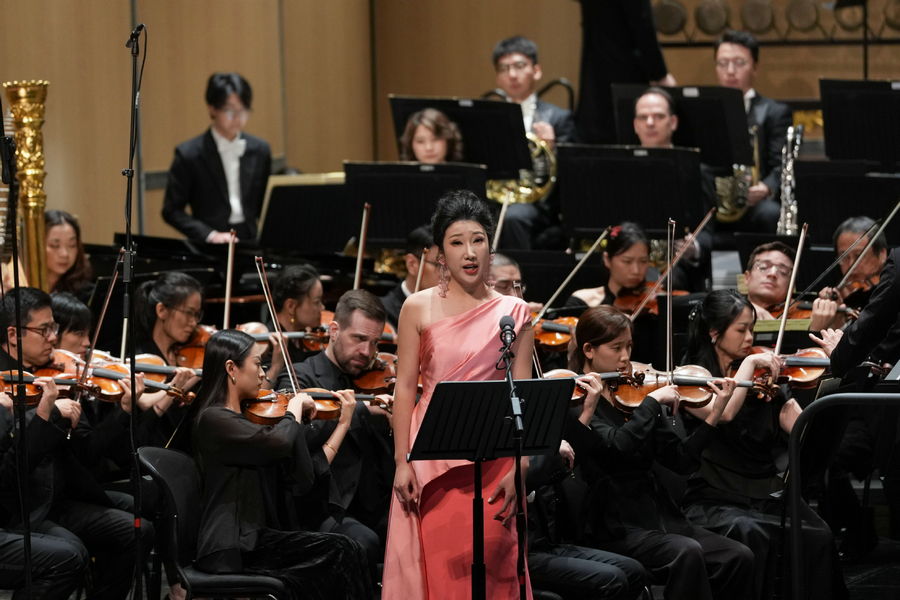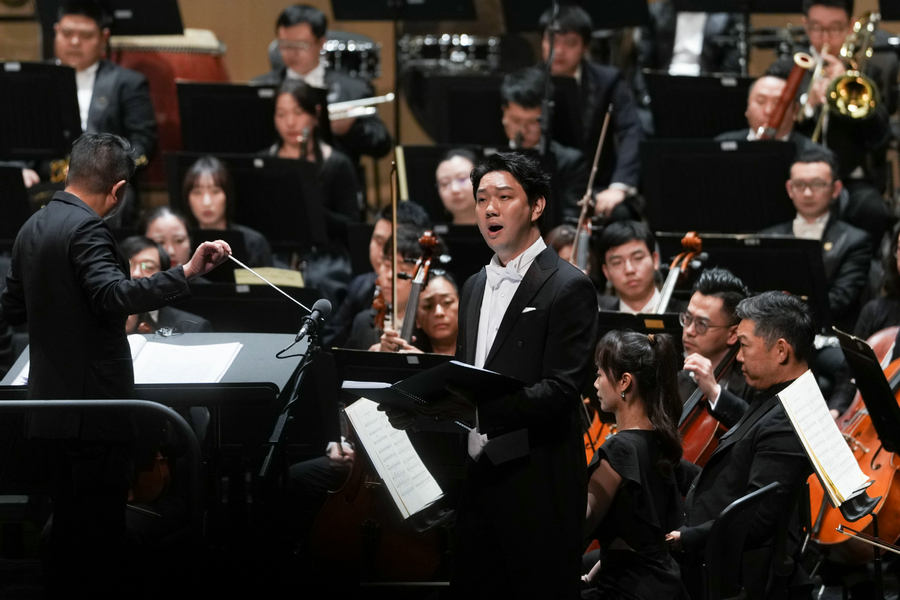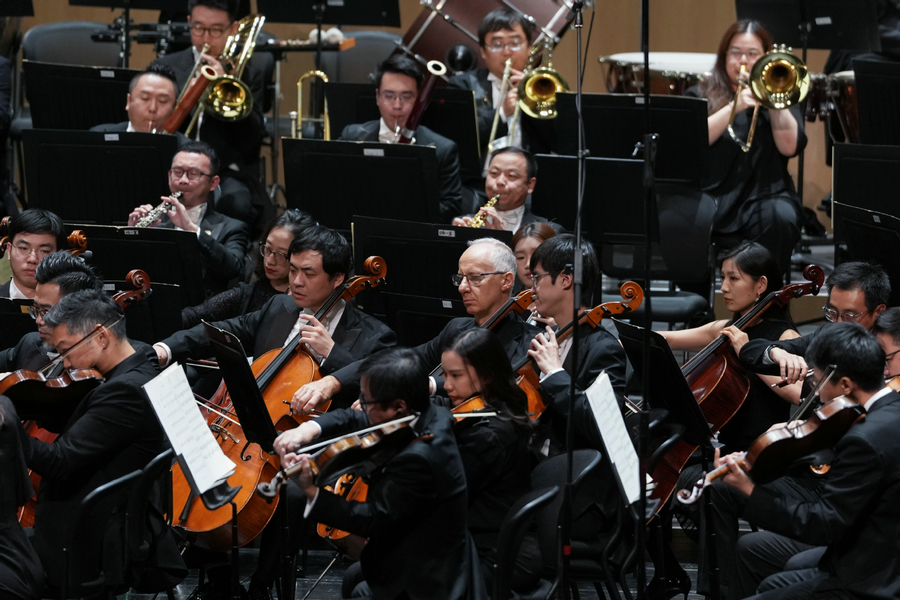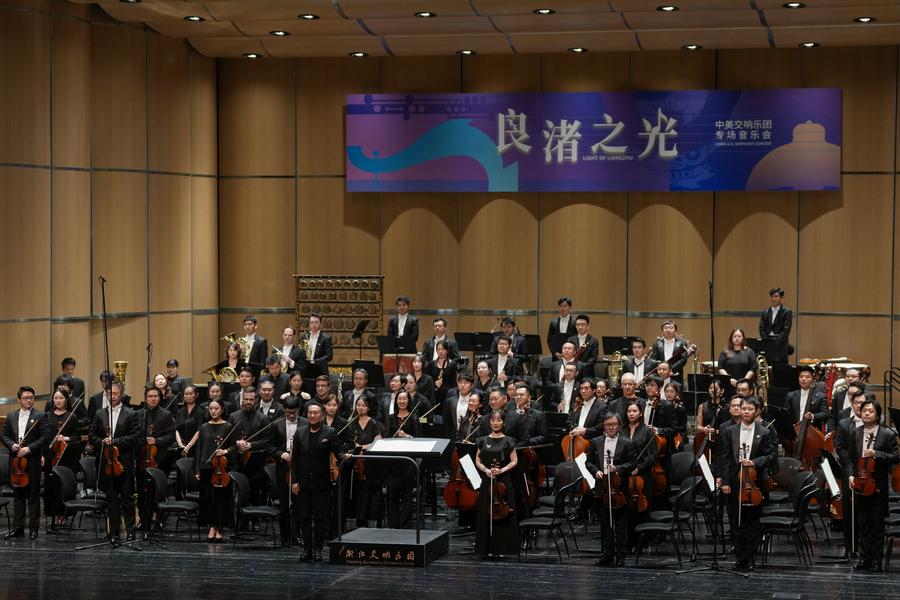发布时间:2025-10-19 21:41 来源:chinadaily.com.cn |By Yang Xiaoyu in Hangzhou
The Philadelphia Orchestra and the Zhejiang Symphony Orchestra co-presented the “Light of Liangzhu” symphony concert on Saturday evening at the Hangzhou Grand Canal Theater in Hangzhou, East China’s Zhejiang province. Under the baton of conductor Hu Yongyan, the China-US concert showcased a blend of Eastern and Western classical works.
“We are delighted to perform with the Zhejiang Symphony Orchestra for the first time and hope this marks the beginning of a long and fruitful partnership,” said Ryan Fleur, president and CEO of the Philadelphia Orchestra, in his speech before the concert.
“Since 1973, when the Philadelphia Orchestra became the first US orchestra to visit China, we have shown that music has a unique ability to connect us all. Tonight’s shared music-making with the Zhejiang Symphony Orchestra beautifully exemplifies how music can help us find common ground,” he added.
Before the concert, members of the Philadelphia Orchestra visited the Archaeological Ruins of Liangzhu City Park, where, surrounded by golden rice fields, they performed a rearranged version of the iconic Chinese piece Liang Zhu (The Butterfly Lovers).
The Liangzhu ruins were discovered in 1936, and in 2019, the Archaeological Ruins of Liangzhu City were added to the UNESCO World Heritage List. The site is key to understanding the origins of the Yangtze River civilization, which was rooted in rice farming.
“Independence Hall in Philadelphia is also a UNESCO World Heritage Site,” Ryan Fleur said in an interview after the concert. He described the collaboration between the US and Chinese orchestras as a “dialogue between the birthplace of the United States and the birthplace of Chinese civilization.”

The evening’s performance began with Picturesque Zhejiang, which captivated the audience with the natural and cultural richness of the eastern province.
According to Guo Yijiang, director of the Zhejiang Symphony Orchestra, the concert featured two different versions of Spring River and Flowers in the Moonlight, inspired by the Tang Dynasty (618-907) poet Zhang Ruoxu’s famous poem of the same title.
One version was composed by American composer Mason Bates, featuring baritone Liu Tao and soprano Yu Xianyao. The other was a pipa and orchestra piece created by Chinese composers Wu Zuqiang and Liu Dehai. Pipa virtuoso Yang Jing skillfully blended the mesmerizing sounds of the traditional Chinese four-stringed lute with the grandeur of symphonic music, earning thunderous applause.
The concert program also highlighted Ludwig van Beethoven’s Symphony No. 6, known as the Pastoral Symphony, a piece the Philadelphia Orchestra performed during its first visit to China 52 years ago.

Baritone Liu Tao. [Photo/Xinhua]


